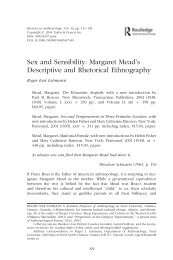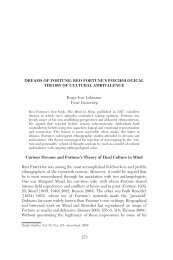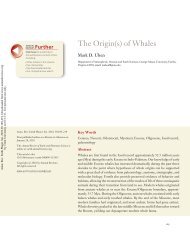Suggested Solutions to Assignment 4 (Optional) - Trent University
Suggested Solutions to Assignment 4 (Optional) - Trent University
Suggested Solutions to Assignment 4 (Optional) - Trent University
Create successful ePaper yourself
Turn your PDF publications into a flip-book with our unique Google optimized e-Paper software.
is forecasted, the more the estimated regression equation is likely <strong>to</strong> lead <strong>to</strong><br />
error because it does not reflect the structural changes (i.e., changes in the values<br />
of the estimated coefficients) that usually occur over time.<br />
11. (a) The reduced-form equation for C t is obtained by substituting Equation 6-23 for GNP t<br />
in<strong>to</strong> Equation 6-21 for C t . That is:<br />
Substituting Equation 6-23 for GNP t in<strong>to</strong> Equation 6-21 for C t (and omitting u 1t<br />
because its expected value is zero), we get<br />
C t = a 1 + b 1 (C t + I t + G t )<br />
(6-24')<br />
C t = a 1 + b 1 C t + b 1 I t + b 1 G t (6-24")<br />
By then substituting Equation 6-22 for I t in<strong>to</strong> Equation 6-24" (and omitting u 2t ), we have<br />
C t = a 1 + b 1 C t + b 1 (a 2 + b 2 FS) + b 1 G t<br />
(6-25')<br />
C t = a 1 + b 1 C t + b 1 a 2 + b 1 b 2 π t − 1 + b 1 G t (6-25")<br />
Collecting the C t terms <strong>to</strong> the left in Equation 6-25" and isolating C t , we have<br />
C t (1 − b 1 ) = a 1 + b 1 a 2 + b 1 b 2 π t − 1 + b 1 G t<br />
(6-26')<br />
Dividing both sides of Equation 6-26' by 1 − b 1 , we finally obtain<br />
C t = a 1 + b 1 a 2 + b 1 b 2 π t − 1 + b 1 G t (6-27')<br />
1 − b 1 1 − b 1 1 − b 1 1 − b 1<br />
Equation 6-27' is the reduced-form equation for C t . It is expressed only in terms<br />
of π t − 1 and G t (the exogenous variables of the model) and can be used in forecasting<br />
C t + 1 by substituting the known value of π t and the predicted value of G t+1 in<strong>to</strong><br />
Equation 6-27' and solving for C t + 1 .<br />
(b) Equation 6-22 is already in reduced form because π t − 1 is exogenous (i.e., it is<br />
known in period t). The lagged (and therefore known) value of a variable is<br />
sometimes known as a predetermined variable.<br />
12. Wait for June 2011 when the 2011/1 issue of the OECD Economic Outlook will be out and<br />
compare the forecasts presented in Table 6-10 in the text with the actual results reported<br />
for 2010 in June 2011.<br />
13. Prepare a table similar <strong>to</strong> Table 6-10 in the text of the macroforecasts in the 2011/2 issue of<br />
the OECD Economic Outlook.<br />
116









